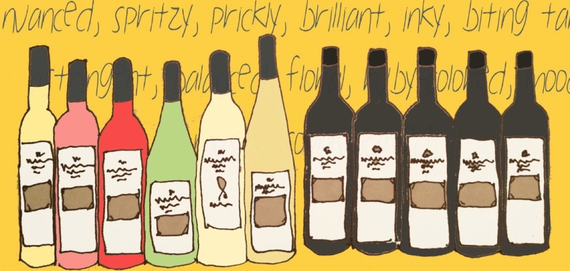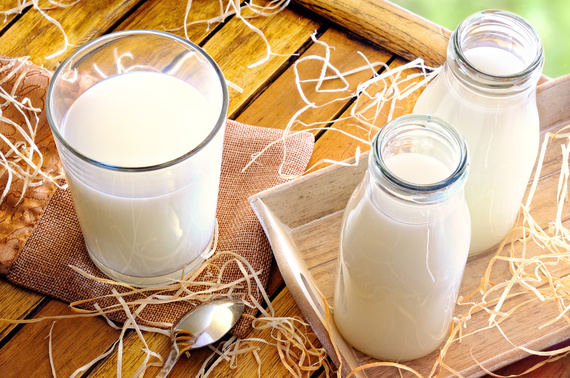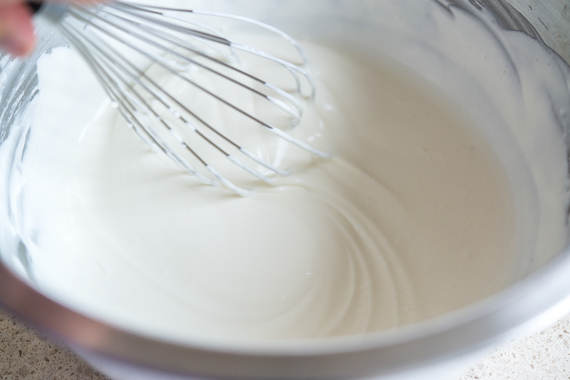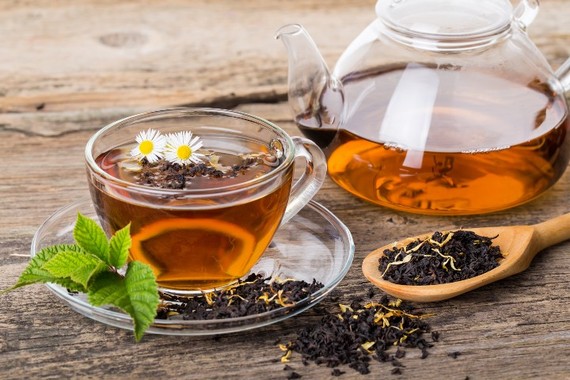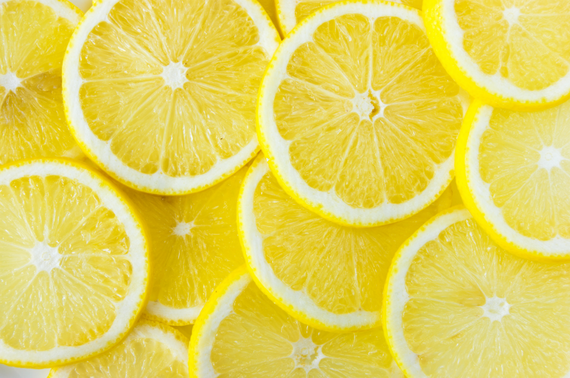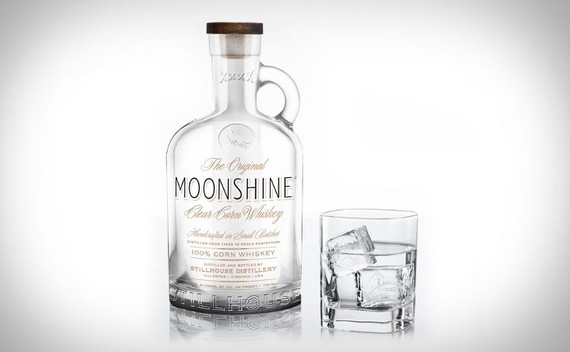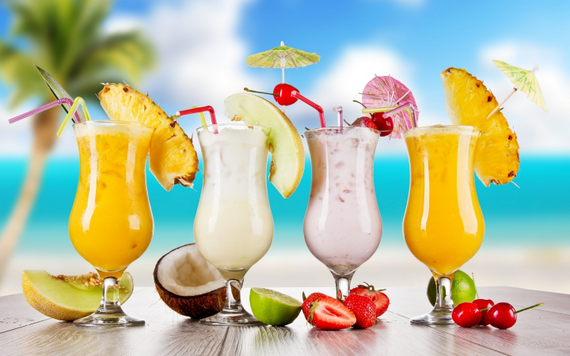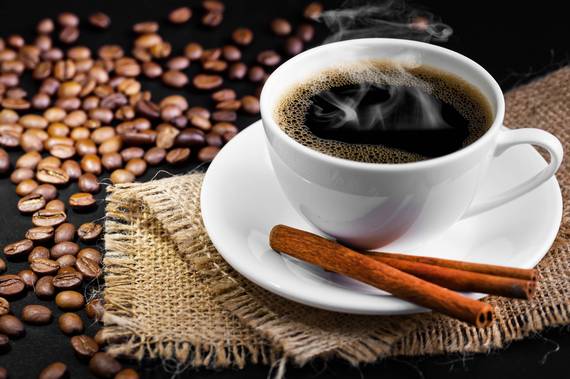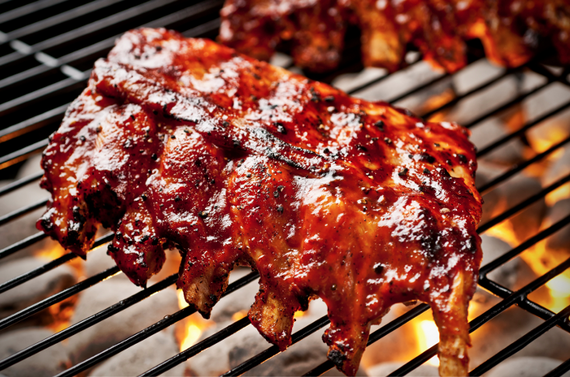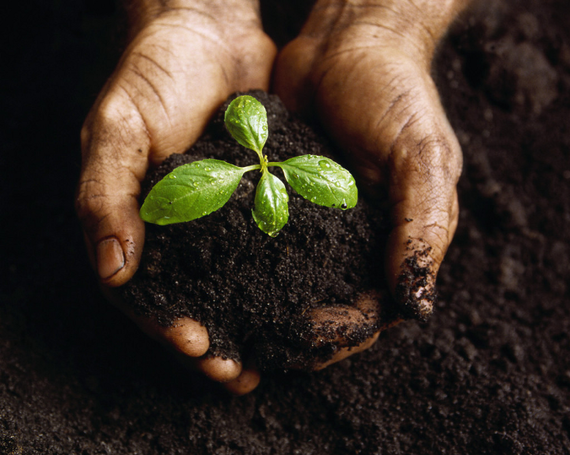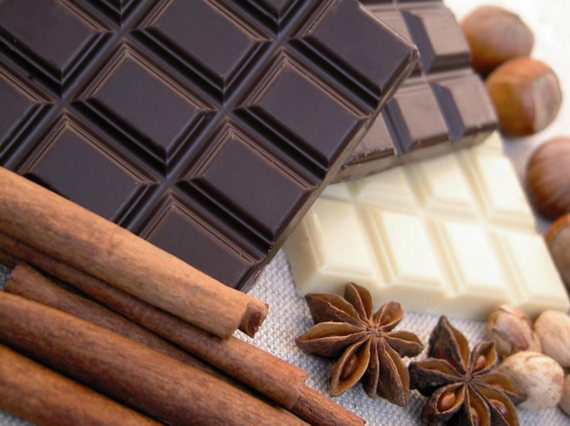The ancient Greeks had four distinct words to express the nuances of 'love'. 'Eros' characterized love driven by lust and sexual passion, for example, and 'Storge' described the affectionate kind of love that, say, parents feel toward their offspring. Words give the world meaning. Every time we learn a new word we add a new color to our palette. Not only can we better depict the world for others, but we can also better understand it ourselves.
This is especially true when it comes to wine. What follows are the ten wine words that you need in your palette.
1. Body: Ever noticed how whole milk tastes thicker than skim milk? That's body -- the wine's mouth-feel in terms of weight and thickness. There are three categories here: light-bodied (e.g., skim milk), medium-bodied (e.g., whole milk), and full-bodied (e.g., heavy cream). Of course a full-bodied wine will not be as thick as heavy cream, but the relative differences are similar. Here's an insightful experiment: drink a Cabernet Sauvignon (full-bodied) alongside a Pinot Noir (light-bodied) and see if you can feel the difference in terms of the weight on your palate.
2. Tannins: If you've ever had over-steeped black tea, you know exactly what tannins feel like. Tannin is a compound in the wine that causes your mouth to feel dry and can taste slightly bitter and/or astringent. In right doses, tannins contribute to the wine's longevity by enabling it to age. Nebbiolo (e.g., Barolo), Cabernet Sauvignon, Syrah, and Petit Sirah are all prime examples of high-tannin wines. On the other end of the tannin spectrum we have Pinot Noir, Merlot, Barbera, Grenache, Gamay, and Zinfandel, all of which have softer tannins.
3. Acidity: Ever notice that raw lemon makes you pucker up and intensely salivate? That's attributed to acid. Wines high in acid can be quite refreshing and will keep you yearning for another sip. In large doses, acid can make the wine taste tart and/or sour and will cause you to salivate. Moreover, acid allows wines to better age and can contribute to the wine's balance (see 'balance' below). Riesling, Grüner Veltliner, Chablis, Sauvignon Blanc, Nebbiolo, Barbera, Gamay and Zinfandel all come to mind when I think of high-acid wines.
4. Alcohol: Have you ever tasted a really strong, alcoholic drink? Of course you have. Why is alcohol important in wine? It contributes to the wine's viscosity and body, as evidenced in the thick tears running down the side of the glass in wines that are particularly high in alcohol. Alcohol has the capacity to balance out both tannins and sweetness, but in too large a dose is capable of eclipsing the fruit and/or making the wine taste unnecessarily hot on the finish.
5. Balance: Unfortunately, at some point in our lives most of us have encountered a cocktail with too much sweetness or alcohol, or not enough of either. It was lacking balance. Balance simply implies that there's harmony between the different sensations (e.g., alcohol, tannin, acidity, etc.) you detect when drinking the wine, so no single element sticks out like a sore thumb.
6. Sweet vs Dry (yes, they're opposites): Have you tasted the difference between black coffee vs. coffee with cream and a heap of sugar? The former would be considered 'dry', and the latter 'sweet'. It's important to note that sweet doesn't equate to our normal interpretation of the word when it comes to wine. Sweet technically refers to wines with residual sugar (e.g., dessert wine), but dry (very low in sugar) wines can sometimes taste sweet due to a depth of ripe fruit flavors. In other words, it's possible to have a wine that's entirely dry but tastes fruity, which you may interpret as sweet. Dry New World red wines (e.g., Pinot Noir, Cabernet Sauvignon, Shiraz, etc.), for example, often come off as 'sweet' because they contain flavors of intense, ripe fruit.
7. Oaky: Have you ever had the pleasure of eating BBQ ribs? The smoke penetrates the meat and adds a new dimension of delicious flavor. The phenomenon of imparting flavor applies to wine as well, where 'oaky' refers to flavors diffused into the wine by the oak barrel it was vinified and/or aged in. Oaky flavor profiles vary depending on the type and age of oak used. Common aromas for 'oaky' wines are vanilla, toast, nutty, cedar, coconut, cinnamon, clove, dill and smoke. Open a Napa Cabernet Sauvignon and see if you can pick out any of these scents.
8. Earthy: Ever smelled fresh soil? It's 'earthy' -- equal parts freshness, moisture, mustiness and ferment. This can be considered a negative when the earthy flavors/aromas are overly pronounced, but in moderation earthiness can add tremendous complexity to a wine. Chianti Classico is a fine example of a delicious wine where the combination of earthy, rustic undertones come together with fruit flavors to make for an outstanding wine.
9. Structure: We can all appreciate the difference between a 2D image vs. a 3D image. The former is flat, like a wine that lacks structure, while the latter has shape and depth -- a wine with excellent structure. Structure is the texture and mouthfeel, or lack thereof, of the wine on your palate, which is determined by the wine's level of acidity, alcohol, tannin, and sugar.
10. Finish: Ever tasted the difference between milk chocolate and dark chocolate? While they're both divine, the concentrated flavors of the dark chocolate linger on your taste buds longer, well after you've swallowed. In other words, it has a long 'finish'. Finish is how long you taste the pleasant elements of the wine after you've swallowed. Many inexpensive wines are rather pleasant on the nose and taste great on the way down, but once you've swallowed, the taste vanishes and leaves you with a short to nonexistent finish. You'll find that high quality wines, on the other hand, leave their mark on your senses long after you've imbibed.
Okay, now that we have the most fundamental terms down, we're going to apply them. I just opened a bottle of Amarone and have provided my tasting notes below for your reference.
The 2009 Roccolo Grassi Amarone della Valpolicella is a full-bodied wine that fires on all cylinders. The nose is complex with aromas of cherry, fig, cedar, tobacco, spices and earth. The oak is well-integrated, and the tannins are beginning to soften. Despite its elevated alcohol content (16.5%!), this Amarone is in perfect balance and the finish is long and satisfying. A remarkable wine... bravo!
Next time you open a bottle, try drawing upon the concepts discussed above as you enjoy the wine.
---
Being mindful of these ten elements will give you deeper insight into your likes and dislikes when it comes to the many wine varietals and styles out there, and allow you to better evaluate the quality of wine. Throw caution to the wind and don't worry if you only remember a few -- you're still one step closer to wine enlightenment.
Cheers!
PS: Any wine words you're uncertain about that aren't on this list? Ask about them in the comments and I'd be happy to address them.
What do you think? I'm going to continue to attempt the impossible of teaching you about wine without boring you to death. If you want to keep reading, follow me on Twitter, and check out my new publication, Vintopia. Cheers!
